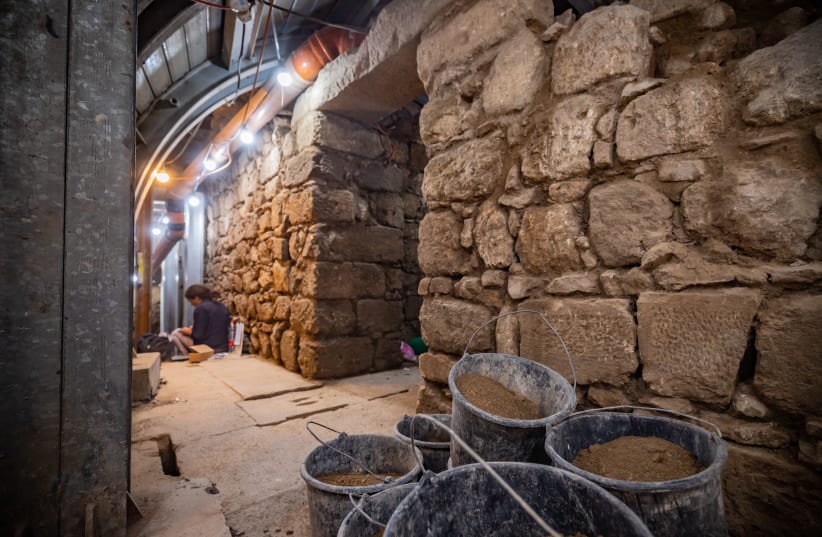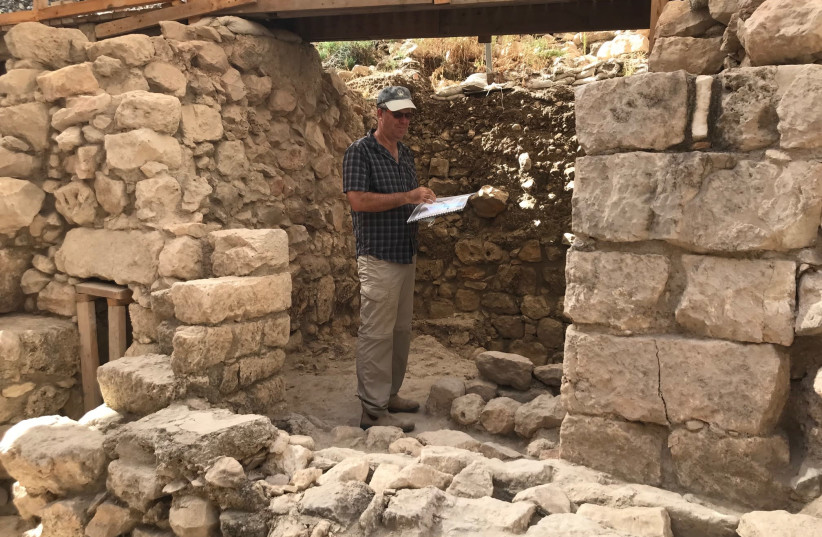Some 2,000 years ago, as the festival of Sukkot approached, tens of thousands of Jews left their homes throughout the Land of Israel and beyond and began a journey toward Jerusalem. There they would encounter a monumental and flourishing city and take part in what likely was one of the most intense religious experiences in the entire Roman Empire.
Ancient remains might not represent the best tools to pinpoint what was happening in a very specific and short period of time – such as the seven days of a festival whose characterizing commandment is to build a temporary booth that would not leave anything permanent.
However, excavations in Jerusalem in conjunction with historical sources have revealed a grandiose picture of that heyday period just before the city and its temple would be destroyed at the hands of the Romans.
“When we speak about a pilgrimage in Hebrew, we use the expression aliyah al a-regel, which does not simply suggest the notion of a pilgrimage, but literally indicates climbing up using one’s feet,” said Dr. Guy Stiebel, a senior lecturer at Tel Aviv University.
“People took a break from ordinary life, left their houses and traveled toward Jerusalem, which they reached through the area located at the southern tip of what today we call the City of David,” he added.
Archaeological excavations have revealed the gate the pilgrims crossed.
“They would purify themselves in the Siloam Pool and then go straight up to the Temple Mount, through a stepped street which was previously believed to have been built at the time of King Herod,” Stiebel noted. “Now we know that the project was actually carried out under Judean Governor Pontius Pilate. In spite of his bad reputation in the eyes of Christianity, he built some of the most impressive monuments in Jerusalem.”
The commandment for Jews to go up to Jerusalem during Passover, Shavuot and Sukkot is included in the Torah.
Narratives about Jews performing the pilgrimage are already included in later books of the Hebrew Bible, said Dr. Yonatan Adler, a senior lecturer at Ariel University and an expert in ancient ritual baths – or mikvaot – where Jews were required to immerse in order to purify themselves, in their daily life as well as before visiting the temple.
“Based on these texts, we can probably assume that some form of pilgrimage was already occurring during the First Temple Period,” he said, referring to the period between 1200 BCE and 586 BCE when the sanctuary in Jerusalem stood, before being destroyed by the Babylonians.
By first century CE Roman-Jewish historian Titus Flavius Josephus says that millions of people took part in the pilgrimage, bringing tens of thousands of sacrifices to the holy temple. Hellenistic Jewish philosopher Philo of Alexandria also speaks about the occasion in his work.
The itinerary was designed in such a way that people would experience what Stiebel described as a “wow-effect,” similar to that felt by someone visiting a majestic cathedral.
“At the time of Herod, the Temple Mount was known as one of the biggest religious compound in the Roman world,” he said.
The Siloam Pool was only one of the many public ritual baths that have been uncovered on the way or in the vicinity of the Temple Mount.
“According to my tally we have found around 1,000 mikvaot in the country, and a large number – some 200 of them – are in Jerusalem or its surroundings,” Adler said. “We have to remember that Jews had to purify themselves not only for a pilgrimage but in their daily life as well. However, we have uncovered some public ritual baths that stand on the road to Jerusalem that are not connected to any settlement or agricultural installation and it is reasonable to assume that they were used by pilgrims on the way to the city.”
According to Adler, it is hard to know what at the time the experience of immersing in a ritual bath – some of which are large enough to assume that multiple people would enter at once – was like.
“We do not know about how the separation of sexes – if any – would work, nor whether people would go in the water in the nude or wearing some clothes,” he said. “On the other hand, we also do not know whether there was any specific sensitivity regarding nakedness.”
Jews from all backgrounds participated in the pilgrimage.
“Anyone, regardless of their social status, could join, immerse themselves in the pool, walk toward the Temple as the experience built up with tens if not hundreds of thousands of people gathered inside the city on this route,” Stiebel added.
While no traces survive of the ancient booths those Jews probably built to celebrate the holiday, archaeology provides other important evidence of the centrality of the festival of Sukkot.
“The Four Species were featured on the coins minted by the rebels against the Romans during the First Jewish Revolt,” Adler said.
A palm tree bound with some leafy branches – likely the willows and the myrtle – and one or two citrus appear on artifacts that were also a symbol of freedom and independence against the Romans.
“It is reasonable to think that the rebels considered the Four Species a symbol that anyone would recognize,” Adler said.

